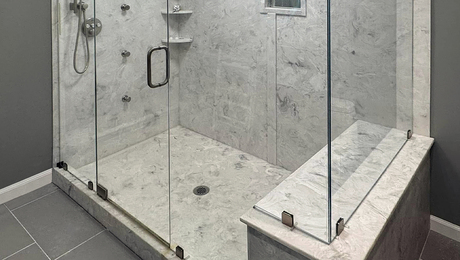urban wildlands interface zone, (venting)
A few years back the CDF, (California Department of Forestry), instituted some new rules regarding soffit vents. They were disallowed and you had to put in eyebrow vents on the roof itself, or some equivalent. Has anyone kept up on whether or not this is still the case? Have there been any new technological developments in the way of doing the venting so as to avoid vents on the roof itself? Thanks.



















Replies
Is that for fire issues, or something else? I'm pretty sure there are thermostatic soffit vents that close in the case of a fire.
Yes, it's all about embers.
I'm wondering if anyone here has built anything in the last couple of years that is approved for the urban/wildlands interface zones for soffit vents. I drew up a set of plans a few years back and there wasn't anything available at the time and now that I'm getting down to building it would be nice to know if my options have changed.
The thing is finding an acceptable solution, (to me), that is approved by CDF. If anyone knows about such options and has experience with them, it'd be great to hear about it.
You might want to talk to people at Cor-a-vent, who make vents for just about every application.
I think the main problem with those soffit vents is they were 1/4" screen, and let embers enter freely. I wonder what a continuous band of corrugated plastic would be like?
Thanks, I'll give them a look.
It doesn't seem like that difficult a problem to solve, except for the trouble and expense of the testing required by the CDF.
Just a little perspective for all those not familiar with the area ...
Nearly every change of seasons, California (and neighboring areas) has episodes of wildfires. It's nearly routine for buildings to become endangered, and actual losses are no longer rare. It's beyond the scope of this forum to speculate as to the causes- but we do need to know that grass / brush fires routinely put homes at risk.
Yet, nearly every time such a fire burns out a street, some homes escape serious damage, while others are completely consumed. I think it was in the mid-90's, when the Oakland fire really brought this out: a formerly developed hillside was left with but one home standing.
Thus, there have been several codes developed so as to reduce the damage a fire might cause. Every fire repeats the lessons. It's reasonable for us to expect every contractor to know both these codes, and how to address the the concerns.
It doesn't really matter how 'it's always been done' or 'how we do it in Indiana.' For that matter, such vent details should have come up at the time of plan review.
Most fire codes focus on fires within a structure. Here the concern is about a fire outside the home. There are other issues that are addressed by folks besides the contractor and architect. For example, the clearing of ground litter from the area around the home.
Vent all you want .... but the homeowner expects their home to be there after the next fire.
I don't think the OP was "venting" -- I think he was looking for vents. Just a poor choice of wording in the thread title.
FHB did an article about that fire
And the houses that didn't burn. Seemed like the house that survived and was highlighted had no soffit vents & a tile roof.
Joe H
FHB did an article about that fire
And the houses that didn't burn. Seemed like the house that survived and was highlighted had no soffit vents & a tile roof.
Joe H
Amish electrician...? That's funny.
I was wondering about venting, the noun, not "venting", the verb, heh, heh.
The project I am working on is in the So Cal mountains, and is subject to urban wildlands interface building requirements. The architect who drew the plans (about 2 years ago) is pretty dialed with the county and complying with these requirements- soffit vents were part of the plans, as were boxed soffits- the issue, as I have heard repeatedly, is the possibility of airborne embers getting under eaves and into vents. His plans moved through the building dept. approval process without any reviews (one could obtain many perspectives into that, I'm sure.) I would imagine a reasonably savvy architect would be quite informed about urban-wildlands interface requirements, and local building codes.
On a related note, foundation venting requires ember-proof screening, which is incredibly expensive- about $25-$45 each! These baffled vent screens are only made by two manufacturers, and in each case, the air movement rating was so minimal (due to the baffling) that to comply with ideal foundation venting, would have required 30 vents for a 1000 sf addition! I get the sense that this is an example of where new building regulations have not yet been followed by an ingenuity and competitiveness of the manufacturing industry.
Maybe fire sprinklers? For the roof that is. I considered such a thing for a house I designed. Fire sprinklers that spray the roof during an 'episode'. I've heard fire sprinklers may be standard code for residences in the near future. But this would take it to the exterior as well as the interior.